Rockford, Illinois Blood Testing Facilities
 Represents a LabCorp blood testing facility
Represents a LabCorp blood testing facility Represents a Quest Diagnostics blood testing facility
Represents a Quest Diagnostics blood testing facility

Nearby Labcorp Blood Testing facilities:
- Labcorp Center Distance: 40 m, 5911 Northwest Highway Ste 108, Crystal Lake, McHenry County, IL, 60014
- Labcorp Center Distance: 41 m, 1710 N Randall Road Ste 240, Elgin, Kane County, IL, 60123
- Labcorp Center Distance: 44 m, 450 Dundee Ave, Elgin, Kane County, IL, 60120
- Labcorp Center Distance: 48 m, 725 W Fabayan Parkway Suite D, Batavia, Kane County, IL, 60510
- Labcorp Center Distance: 50 m, 141 E. Irving Park Road, Streamwood, Cook County, IL, 60107
- Labcorp Center Distance: 51 m, 2338 Higgins Rd, Hoffman Estates, Cook County, IL, 60195
- Labcorp Center Distance: 57 m, 121 South Wilke Rd 405, Arlington Heights, Cook County, IL, 60005
- Labcorp Center Distance: 59 m, 1020 E Ogden Ave Ste 208, Naperville, Dupage County, IL, 60563
- Labcorp Center Distance: 60 m, 2272 W 95Th Street Ste 100, Naperville, Will County, IL, 60564
- Labcorp Center Distance: 61 m, 35 Tower Ct Ste E, Gurnee, Lake County, IL, 60031
- Labcorp Center Distance: 66 m, 2601 Compass Rd Suite 135, Glenview Nas, Cook County, IL, 60026
- Labcorp Center Distance: 67 m, 522 W Chestnut Street, Hinsdale, Dupage County, IL, 60521
- Labcorp Center Distance: 68 m, 6530 Sheridan Road, Kenosha, Kenosha County, WI, 53143
- Labcorp Center Distance: 71 m, 330 North Madison Ste B2, Joliet, Will County, IL, 60435
- Labcorp Center Distance: 72 m, 12555 W National Ave, New Berlin, Waukesha County, WI, 53151
- Labcorp Center Distance: 75 m, 2025 S. Chicago Street, Joliet, Will County, IL, 60436
- Labcorp Center Distance: 76 m, 3040 N 117Th St 210, Wauwatosa, Milwaukee County, WI, 53226
- Labcorp Center Distance: 77 m, 1502 S. Layton Blvd, Milwaukee, Milwaukee County, WI, 53215
- Labcorp Center Distance: 78 m, 756 N 35Th St, Milwaukee, Milwaukee County, WI, 53223
- Labcorp Center Distance: 79 m, 111 N. Wabash Avenue Ste 1710, Chicago, Cook County, IL, 60602
- Labcorp Center Distance: 80 m, 5434 W Capitol Dr, Milwaukee, Milwaukee County, WI, 53216
- Labcorp Center Distance: 81 m, 16325 Harlem Ave Ste 110, Tinley Park, Cook County, IL, 60477
- Labcorp Center Distance: 87 m, 3400 Dexter Ct Ste 205, Davenport, Scott County, IA, 52807
- Labcorp Center Distance: 88 m, 5359 Eastern Ave, Davenport, Scott County, IA, 52807
Nearby Quest Blood Testing facilities:
- Quest Center Distance: 5 m, 641 Highgrove Pl, Rockford, Winnebago County, IL, 61108-2506
- Quest Center Distance: 28 m, 3244 Sycamore Rd, Dekalb, Dekalb County, IL, 60115-4941
- Quest Center Distance: 40 m, 260 E Congress Pkwy, Crystal Lake, McHenry County, IL, 60014-6235
- Quest Center Distance: 42 m, 885 S Randall Rd, Elgin, Kane County, IL, 60123-3002
- Quest Center Distance: 46 m, 2631 Williamsburg Ave, Geneva, Kane County, IL, 60134-1111
- Quest Center Distance: 47 m, 22285 Pepper Rd, Barrington, Lake County, IL, 60010-2538
- Quest Center Distance: 48 m, 1180 W Wilson St, Batavia, Kane County, IL, 60510-7693
- Quest Center Distance: 51 m, 2500 W Higgins Rd, Hoffman Estates, Cook County, IL, 60169-7208
- Quest Center Distance: 53 m, 1100 W Veterans Pkwy, Yorkville, Kendall County, IL, 60560-4728
- Quest Center Distance: 54 m, 471 W Army Trail Rd, Bloomingdale, Dupage County, IL, 60108-2628
- Quest Center Distance: 55 m, 1854 E Grand Ave, Lindenhurst, Lake County, IL, 60046-7821
- Quest Center Distance: 56 m, 2088 Ogden Ave, Aurora, Kane County, IL, 60504-4376
- Quest Center Distance: 57 m, 303 E Army Trail Rd, Bloomingdale, Dupage County, IL, 60108-2169
- Quest Center Distance: 58 m, 565 Lakeview Pkwy, Vernon Hills, Lake County, IL, 60061-1839
- Quest Center Distance: 59 m, 640 S Washington St, Naperville, Dupage County, IL, 60540-6693
- Quest Center Distance: 60 m, 1450 Busch Pkwy, Buffalo Grove, Lake County, IL, 60089-4541
- Quest Center Distance: 61 m, 15 Tower Ct, Gurnee, Lake County, IL, 60031-5708
- Quest Center Distance: 62 m, 24600 W 127Th St, Plainfield, Will County, IL, 60585-9507
- Quest Center Distance: 64 m, 484 W Boughton Rd, Bolingbrook, Will County, IL, 60440-2398
- Quest Center Distance: 65 m, 7530 Woodward Ave, Woodridge, Dupage County, IL, 60517-3100
- Quest Center Distance: 66 m, 1113 Fairview Ave, Westmont, Dupage County, IL, 60559-2709
- Quest Center Distance: 67 m, 534 Chestnut St, Hinsdale, Dupage County, IL, 60521-3175
- Quest Center Distance: 70 m, 4709 W Golf, Skokie, Cook County, IL, 60076-1258
- Quest Center Distance: 71 m, 310 N Hammes Ave, Joliet, Will County, IL, 60435-5676
- Quest Center Distance: 72 m, 4126 N Milwaukee Ave, Chicago, Cook County, IL, 60641-1860
- Quest Center Distance: 74 m, 800 Austin St, Evanston, Cook County, IL, 60202-3439
- Quest Center Distance: 76 m, 2600 N Mayfair Rd, Wauwatosa, Milwaukee County, WI, 53226-1309
- Quest Center Distance: 77 m, 3000 N Halsted, Chicago, Cook County, IL, 60657-5188
- Quest Center Distance: 78 m, 1460 N Halsted St, Chicago, Cook County, IL, 60642-2605
- Quest Center Distance: 79 m, 9046 W 159Th St, Orland Park, Cook County, IL, 60462-5646
- Quest Center Distance: 80 m, 10837 S Cicero Ave, Oak Lawn, Cook County, IL, 60453-6458
- Quest Center Distance: 81 m, 19070 Everett Blvd, Mokena, Will County, IL, 60448-2073
- Quest Center Distance: 85 m, 8751 S Greenwood Ave, Chicago, Cook County, IL, 60619-7018
- Quest Center Distance: 87 m, 19150 South Kedzie Ave, Flossmoor, Cook County, IL, 60422-0001
- Quest Center Distance: 89 m, 3524 Jersey Ridge Rd, Davenport, Scott County, IA, 52807-2223
- Quest Center Distance: 92 m, 17665 Torrence Ave, Lansing, Cook County, IL, 60438-4839
- Quest Center Distance: 95 m, 8840 Calumet Ave, Munster, Lake County, IN, 46321-2546
- Quest Center Distance: 98 m, 175 E Bethel Dr, Bourbonnais, Kankakee County, IL, 60914-1456
Hormone Replacement Therapy Services for the State of Illinois
Are you over the age of thirty and feel that symptoms related to premature aging are bringing you down? You may actually be suffering from a condition known as hormone imbalance. Two of the most common forms of Hormone Imbalance which are associated with the aging process are Testosterone Deficiency and Human Growth Hormone Deficiency.
The Conscious Evolution Institute provides Pharmaceutical Hormone Replacement Therapy Solutions for men and women all across the United States.
HGH Deficiency Treatments in Chicago and Greater Illinois
Do you find yourself dragging as you grow older? Are you experiencing weight gain and loss of muscle mass even though you haven't changed your lifestyle? Are you experiencing psychological issues, not associated with your life circumstances, such as depression or a loss of well-being?
You may be suffering from Human Growth Hormone Deficiency, also known as Somatopause. Human beings are sensitive to hormonal changes, and as we get older, our brains secrete less and less of this vital hormone. With regular Bio-Identical HGH Shots, it is possible to negate the effects of Somatopause, potentially improving your physiological health, improving your outlook as well as reducing your mortality risk.
Sermorelin Acetate HGH Deficiency Treatment
HGH Injections aren't the only way to restore Growth Hormone Levels, however. The Conscious Evolution Institute also offers Recombinant Sermorelin Therapy, which boosts natural HGH Production by safely stimulating the pituitary gland. We can help you decide which form of treatment is best for you.
Low-T Treatments in Chicago and Greater Illinois
Testosterone Deficiency is also a major medical disorder which has the capacity to significantly disrupt the lives of both men and women. Like HGH, Testosterone production starts to fade around the time that we reach our mid-twenties. Many men don't experience issues for years or decades, but other men are much more sensitive to these hormonal changes.
Low-T is also referred to as Andropause, because it has a tendency to become symptomatic around the same period as Menopause, and can have the same powerful impact on health and wellness. If you are experiencing severe fatigue, loss of muscle mass, anxiety, or weight gain in combination with a lack of libido or loss of sexual ability, there is a major chance that you are suffering from Low-T and can benefit from the various Bio-Identical Low-T solutions that we provide.
HCG Weight Management Treatments in Chicago and Greater Illinois
Not all hormone treatments are intended specifically to correct hormone imbalance. HCG Injections are a form of Bio-Identical Hormone Replacement Therapy which has been proven as an effective medical treatment for obesity.
For men and women that have spent years struggling with their weight, HCG has the ability to break the cycle of dieting and binging which causes so many diets to fail. HCG, when combined with low calorie diet, leads to rapid weight loss, while significantly reducing the feelings of hunger and loss of energy associated with such a diet. HCG helps break free energy trapped in your adipose fat tissue, helping you maintain a healthy metabolism even with a significant reduction in caloric consumption.
Largest Cities in Illinois
Chicago
Chicago, is the largest city in Illinois, and is one of the largest cities in the United States. The only cities in America larger than Chicago are Los Angeles and New York City. Chicago is frequently referred to by its nickname: The Windy City. It's location adjacent to Lake Michigan causes it to experience high levels of snow and wind.
Chicago is also referred to as the Second City, because of its significant size and cultural importance, historically only considered second to New York City. Because Chicago is such a large city, it has a number of sports teams. Chicago is home to the MLB teams the Chicago Cubs and White Sox. It is also home to the NFL Chicago Bears and the NBA Chicago Bulls.
Aurora
Aurora is the second largest city in Illinois, as well as the largest suburb of Chicago. Historically, Aurora was known as The City of Lights, because it was among the first places in America to have street lights controlled completely by electricity.
A unique thing about Aurora is that it has a high concentration of buildings with renowned architecture, with buildings designed by architectural mavens such as Bruce Goff and Frank Lloyd Wright. Like many cities in the Midwest, Aurora has long been known for its significant contribution to national manufacturing.
Rockford
Rockford, Illinois is the third largest city in the state of Illinois, and the largest city outside of the Metro Chicago area. Rockford is often mentioned by the nickname, The Forest City, because of the many large elm trees located throughout the city. It was also one of the first cities in the United States with organized baseball, hosting a team called the Rockford Forest City.
Rockford has experienced issues in recent years because of the decline of the manufacturing sector in the Midwest, but has entered a new era of revitalization in recent years. Today, the largest private sector business in the city is Belvedere Assembly Plant for Chrysler and the largest Public Sector employer is the Rockford school system.
Joliet
Joliet, Illinois is the fourth largest city in Illinois, and is the second largest suburb of Chicago. Joliet is located southwest of Chicago, and is growing faster than any other city in the state. Joliet is often referred to as The City of Champions because of the massive success of the bands of the Joliet Township public school system.
Joliet, like many other cities in the Rust Belt, experienced a significant loss of jobs as manufacturing declined in the area, but its proximity to Chicago has caused it to bounce back in a big way as a suburb for men and women that commute to Chicago. Joliet also has an active entertainment district in its city center, with the minor league team the Joliet Slammers and Harrah's Joliet Casino.
Naperville
Naperville, Illinois is the 5th largest city in the state of Illinois, as well as the third largest suburb of Chicago. Naperville also has the unique distinction of being considered the richest city in the Midwest as well as one of the best cities to live in and raise a family in America.
Naperville belongs to an area known as the Illinois Tech and Research Corridor, and has a large number of high tech jobs, the most significant of which being Alcatel-Lucent and Nicor. Although high tech is the largest industry in the city, the largest single employer is Edward Hospital.
All About Rockford, Illinois Geographic Area
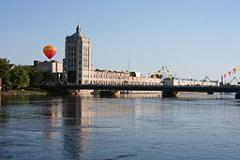

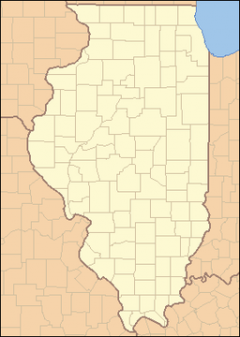
Rockford is a mid-sized city located on both banks of the Rock River in far northern Illinois. Often referred to as "The Forest City", Rockford is the county seat of Winnebago County, Illinois, USA. As reported in the 2010 U.S. census, the city was home to 152,871 people. The metropolitan area has 348,360 residents as of the 2010 United States Census 2010 census. During the latter half of the 20th century Rockford was the second largest city in Illinois and is currently the most populated city in Illinois outside of the Chicago Metropolitan Area. The current mayor is Lawrence J. Morrissey, an independent re-elected to a second four-year term in April 2009.
According to the 2010 census, the city has a total area of 61.95 square miles (160.4 km2), of which 61.08 square miles (158.2 km2) (or 98.60%) is land and 0.87 square miles (2.3 km2) (or 1.40%) is water. Neighboring communities that border Rockford, and are considered an integral part of the Rockford metro area, are the cities of Loves Park, Machesney Park, Belvidere, and the villages of Winnebago, Roscoe, Rockton, Poplar Grove, New Milford, and Cherry Valley. The Rock River is the traditional center of the Rockford area and is its most recognizable natural feature.
Due to its location in the midwest, naturally a deciduous forest, Rockford's climate contains four clearly defined seasons. Summers are usually warm with the average high temperature in July, the hottest month, being 83 °F (28 °C). The winter months can bring bitterly cold air masses from Canada. The average high temperature in January, the coldest month, is 27 °F ( na3 °C). June is Rockford's wettest month while February is the driest. During a typical year, Rockford receives 36.63 in (930 mm) of precipitation.
Rockford and surrounding areas are prone to violent thunderstorms during the months of March, April, May, and June. On April 21, 1967, the neighboring town of Belvidere was struck by a violent F4 tornado, in which twenty-four people were killed and hundreds more injured at Belvidere's High School. Other severe weather events, such as hail and strong winds are common in these storms. On July 5, 2003 at 04:03, microbursts caused major damage on both the east and west sides of Rockford. Approximately 70,000 people were without power, with many on the west side suffering in the heat without electricity for a week. It took months for the damage to be completely cleared, but because the storm struck so early in the morning there were no injuries or fatalities. However, these sometimes violent storms bring the majority of summer rainfall.
The city is also prone to severe snowstorms in winter, and blizzards are frequent winter occurrences. On January 13, 1979 over 9 inches (23 cm) of snow fell on Rockford in just a few hours during one of the strongest blizzards in the city's history. The city averages approximately 38 inches (97 cm) of snowfall in a normal winter, but greater amounts are common. The snowiest winter in the history of the city was the winter of 1978-1979, when 75 inches (1.91 m) of snow fell.
The record high temperature is 112 °F (44 °C), set on July 14, 1936, and the record low temperature is na27 °F ( na33 °C), set on January 10, 1982.
Over the past years Rockford has recorded some of its worst flooding to date. Five inches (127 mm) of rain were dumped onto Rockford on September 4, 2006, leading to the destruction of twenty homes while damaging hundreds more. Less than a year later on August 7, 2007, Rockford was again hit by rain when between 5 ae7 inches of rain fell. Many streets, including major thoroughfares like North Alpine Road and East State Street, were flooded, along with fears of the Alpine Dam breaking. The following day, Governor Rod Blagojevich declared both Rockford and Winnebago County a state disaster area. With this declaration, he dispatched both the Illinois Emergency Management Agency and the Illinois Department of Natural Resources to assist the city. Debris removal, law enforcement, damage assessment, and other duties were offered by the governor.
Rockford's worst flooding though to date was on July 18, 1952, when a total of eleven inches (279 mm) of rain deluged the city. This caused the drowning death of two residents, and the destruction of $1 million in property. This would lead though to a multi-million-dollar drainage program.
As of the 2010 census, there were 152,871 people and 66,700 households. Rockford is in the center of its namesake metropolitan area. The racial makeup of the city was 65.1% White (58.4% Non-Hispanic white), 20.5% African American, 0.4% Native American, 2.9% Asian, 0.01% Pacific Islander, 7.5% from other races, and 3.6% from two or more races. Hispanic or Latino of any race were 15.8% of the population.
The median income for a household in the city was $55,667, and the median income for a family was $65,465. Males had a median income of $37,098 versus $25,421 for females. The per capita income for the city was $19,781. 14.0% of the population and 10.5% of families were below the poverty line. 19.6% of those under the age of 18 and 8.0% of those 65 and older were living below the poverty line.
In the late 1950s, Rockford surpassed Peoria as Illinois' second largest city, holding onto that position for nearly half a century before being overtaken by Aurora after a special census held there in 2003. Note that Rockford was not recounted at the same time so this is not necessarily a direct population comparison.
Rockford is the county seat of Winnebago County. In a fashion similar to other cities its size (or larger), local government is split into executive and legislative branches. The mayor of Rockford is chosen in a general election every four years. The Rockford City Council consists of 14 aldermen, individually elected from each ward in the city.
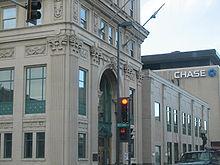
Rockford is divided into fourteen wards which elect one alderman each. The City Council, as of January 2011, consists of :
Rockford was first settled in 1834 ae1835 by Germanicus Kent, Thatcher Blake, and Lewis Lemon, who came from Galena and established themselves on the west bank of the Rock River.
Halfway between Chicago and Galena, the community was briefly known as Midway, but quickly became known as Rockford, because of the excellent ford across the Rock River. A post office was established in 1837. The settlement was incorporated as a village in 1839, and chartered as a city in 1852. The first weekly newspaper was published in 1840 and the first successful daily newspaper appeared in 1877. Between 1890 and 1930 the city had three daily newspapers.
Rockford Female Seminary was chartered in 1847, became Rockford College in 1892, and became fully coeducational in 1958. Its best known graduate is Jane Addams (RFS Class of 1881), the founder of Chicago's Hull House and recipient of the Nobel Peace Prize in 1931. Rockford Public Library, the second such institution in Illinois, first opened to the public in August 1872; the library's first dedicated building, a Carnegie library, was completed by 1902.
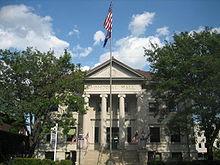
Although Rockford was a sleepy country village for about the first ten years, it thereafter began to expand rapidly in size and industry and became the seat of Winnebago County. In 1851, the Rockford Water Power Company was organized and in 1852 the Galena and Chicago Union Railroad reached the city. These two events, which brought inexpensive power and transportation to the area, changed Rockford forever. By 1860 Rockford had become a significant, growing industrial center, noted for production of the John H. Manny reaper and other agricultural machinery.
In 1876, the Rockford Union Furniture Company was organized by a small group of men led by John Erlander, an immigrant from SmR¥land, Sweden. It was the first of 25 area furniture factories that were formed as cooperatives. Many of the furniture companies were organized with laborers and craftsmen holding significant power, reflecting a different business approach from that of the old Yankee entrepreneur. By the 1880s the furniture industry was using the talents of Swedish-born craftsmen and capitalists, and by the first half of the 20th century Rockford was the second largest furniture manufacturing center in the United States (behind Grand Rapids, Michigan).
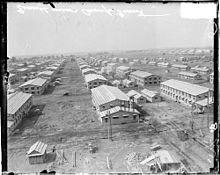
During the first half of the 20th century, Rockford underwent a number of changes that expanded its presence both regionally and nationally. Additionally, economic factors of the time led the city to diversify its industrial base. In 1910, the oldest surviving Harley Davidson dealership was founded in Rockford, Illinois. Kegel Harley-Davidson is also the world's oldest family-owned dealership as it was started by Joe Kegel in 1910 and is still operated today by his great grandchildren, Karl and Mark Kegel. In 1917, the U.S. Army opened Camp Grant, one of its largest training facilities in the nation, in order to train infantry for World War I. After the war, the 18,000-acre (73 km2) facility was closed, then later turned over to the Illinois National Guard. During World War II, Camp Grant served as an induction center for the U.S. Army as well as a POW detention center. The USS Rockford, a Tacoma class frigate named for the city, was commissioned in March 1944 and earned two service stars during World War II.
In 1947, Loves Park incorporated, becoming the first suburb of Rockford. The agricultural implement industry was already in decline by the First World War, and the furniture industry was severely damaged by the Great Depression and the Second World War. By the end of the 1960s both were extinct in the city.
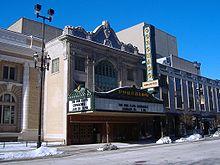
The number of impressive movie palaces built in the 1920s and early 1930s speaks to the thriving economy Rockford had at the time. The Coronado Theater was the largest and most expansive of all these movie theaters in Rockford, complete with an orchestra pit, double balcony, highly ornate design and full array of theatrical and stage equipment. Coronado Theatre, "Rockford's Wonder Theater", was listed during 1979 to the National Register of Historic Places. The Coronado was also the first place Frank Sinatra sang a solo performance. Other theaters in Rockford included the Midway, Times, and State theaters.
Rockford was well known for its elm trees, being the reason for its nickname, the Forest City. Of note are the parks and boulevard street layouts in certain parts of the city. Neighborhood parks and wide common grassy/forested areas forming boulevards are found in the older parts of the city. Many of the parks were part of the street layout put down in the late 1890s and early 1900s (decade) when subdivisions of that era were created. These parks typically were an entire city block, or in some cases larger. They would typically have a bowery, and sometimes a cement-lined pool. The boulevards tend to be in slightly newer subdivisions built in the 1920s. In the mid 1950s an epidemic of Dutch Elm disease more or less wiped out the population of elm trees. However, Rockford is still heavily lined with other types of trees.
Life Magazine described Rockford in 1949: "It is as nearly typical as any city can be". However, from 1950 to 1989, more than half of the earnings in Winnebago County came from manufacturing, far above the national average. Rockford's 20th century industry revolved around machine tools, heavy machinery, automotive, aerospace, fastener and cabinet hardware products, and packaging devices and concepts. The city's industrial background has produced many important and interesting inventions, among them the Nelson knitting machine, airbrush, electric brake, electric garage door opener, dollar bill changer, and electronic dartboard. Some Rockford concerns of historical interest are: Air Brush Manufacturing Company, Free Sewing Machine Company, GC Electronics, General Cement Manufacturing Company, Haddorff Piano Company, Hanson Clock Company, Hess & Hopkins Leather Company, Norse Pottery Company, Rockford Brewing Company, Rockford Silver Plate Company, The Barber Colman Company, and Rockford Watch Company. Woodward, Inc., formerly Woodward Governor Company, is an innovator in control systems for large machinery and aircraft propulsion and originated in Rockford. Woodward remains a substantial employer in the area, although the Corporate Headquarters have moved to Fort Collins, CO.
Rockford has been known as a town that makes toys. The Testors Company still makes model kits and paint and glue supplies for these kits. The Nylint company produced heavy-duty metal scale toys of construction equipment, such as dump trucks, from 1946 to about 2001, when they went out of business. Tootsie toys, headquartered in Chicago, had a satellite factory in Rockford, where small single-piece die cast cars were made for many years. Although not toys themselves, the red-heeled socks which are used for sock monkeys were originally manufactured in Rockford.
Industry in Rockford has been led by Sundstrand Corporation which was formed by the merger of Rockford Tool Company and the Rockford Milling Machine Company in the early 20th century. Hamilton Sundstrand (acquired by United Technologies in 1999) has manufactured many industrial, aviation, and aerospace products.
The 1960s saw expansion of the manufacturing segment in the area. Near the outskirts of Rockford in Belvidere, a Chrysler car factory was built in 1965 which initially assembled the Chrysler Newport and other large cars and now produces the Dodge Caliber and similar cars. Sundstrand, now Hamilton Sundstrand, a division of United Technologies, also expanded during this period making aircraft parts.
After World War II, Rockford underwent a high rate of population growth. By 1960, the city's population was over 125,000, nearly a 50% increase from two decades before. Although the city's population had been concentrated evenly on both sides of the river up to this time, several infrastructure changes would change Rockford forever.
In 1958, the Northwest Tollway (Interstate 90) was completed. To minimize its impact on neighborhoods, the highway was routed not through the city itself, but near the Winnebago-Boone county line several miles from what was then the eastern city limits. The only access to I-90 was an exit on State Street (U.S. Route 20), which was the city's main east-west thoroughfare. The interstate access would lead to a shift in commercial growth from downtown to nearly exclusively on the east side for the next four decades. In 1964, Rockford College relocated its campus from south of downtown to a location near the eastern edge of the city of the time. A year later, Rock Valley College was opened even further to the east. As the 1960s turned into the 1970s, new-home construction shifted almost entirely to the east side. In the mid-1970s, a pedestrian mall was constructed downtown. Intended to increase foot traffic for struggling downtown businesses, it had the reverse effect; many shoppers who still spent money went to indoor malls in the area along with strip malls that sprouted up on the east side throughout the 1980s and 1990s. After decades of controversy, the last part of the downtown pedestrian mall was removed in 2009.
In 1979, construction began on the MetroCentre, a 10,000-seat multi-purpose arena located on the west side of downtown. It opened in 1981 with concerts by Dionne Warwick and The Rolling Stones. The MetroCentre, nicknamed the "Big Orange Box" due to its monochromatic appearance, also has played home to a number of Rockford's professional sports teams along with hosting other events.
Since the end of the 1980s, Rockford has had the ignominious honor of being listed at times as one of America's worst cities by the Rand McNally corporation and Money magazine, sometimes being ranked one of the top ten worst cities. This may have been due to the lack of jobs and high number of outdated or closed factories. Crime on the west side of town was endemic, with huge areas of old established neighborhoods in extreme blight. The homicide rate in these areas was quite high. Many houses were vacant with no one wishing to buy them. The city government has developed many programs to attempt to address these problems and has seen some success. In February 2009, The Wall Street Journal published a series of stories on Rockford and its mayor focusing on various challenges faced by the city, including higher unemployment and lower education levels of workers compared to some cities.
New commercial and residential development have begun taking place in the downtown area. The Main Street Corridor (Illinois Route 2) is also expected to be redeveloped. Construction from the downtown area, south to US Highway 20 was expected to begin in 2007. In 2007 ae08, the MetroCentre in downtown Rockford underwent a number of interior and exterior renovations.
The Rockford economy has suffered since the decline of the manufacturing industry in the late 1980s. Many of the family-owned companies that once inhabited Rockford were acquired by larger companies; the larger companies then relocated the products being made to lower wage parts of the United States or sent them overseas altogether. The city's new focus relies on high-technology businesses, tourism generated by museums and its park system, and the westward growth of the Chicago metropolitan area.
On September 28, 2007, Rick Nielsen, lead guitarist of the rock band Cheap Trick, announced plans for a $25 million restaurant and hotel on the city's far northeast side called "Rick's." The restaurant would have a music theme featuring thousands of guitars and memorabilia that Mr. Nielsen has collected. Groundbreaking was expected in late 2007 with a grand opening in the second half of 2008. As of 2011, this project has not yet materialized. Instead, Swedish American Hospital has begun construction on a new cancer center out near the Riverside Blvd interchange with Interstate 90. A new shopping center is being planned for the northeast corner of the riverside interchange as well.
According to the City's 2009 Comprehensive Annual Financial Report, the largest employers in the city are:
Rockford is linked by highway to Chicago, Illinois; Madison, Wisconsin; and Dubuque, Iowa. In recent decades, the city's location has worked to its advantage in attracting jobs in the logistics and transportation industries. Public transportation in the city is provided by the Rockford Mass Transit District (RMTD); however, public transit infrastructure in Rockford is not at the level of comparably sized communities.
Completed in 1958, the Jane Addams Memorial Tollway (known as the Northwest Tollway until September 2007) links the Rockford area both to Madison, Wisconsin and the northwest Chicago suburbs. From Rockford north, I-90 replaced U.S. Route 51 in Illinois. I-90 also links the city with Milwaukee, Wisconsin, as I-43 joins it 2 miles north of the state line. The tollway was partially responsible in the city's rapid growth eastward from the 1960s to the late 1990s.
U.S. Route 20 goes through Rockford twice. The original highway is now an east-west business route (State Street) that divides the city to the north and south. From the 1970s to the late 1990s, the area was core to commercial development in the city. Rockford also marks the point where U.S. 20 and Interstate 90 no longer parallel each other.
In 1965, a US-20 bypass around the southern end of the city was completed, joining the Northwest Tollway near Cherry Valley. The bypass (known as "Bypass 20") joins State Street west of the city near the village of Winnebago, Illinois. East of Interstate 90, U.S. 20 is a 4-lane divided highway parallelling I-90. From the west, U.S. 20 provides a link to Freeport, Galena, and Dubuque, Iowa. However, much of the highway west of Rockford is a winding two-lane road that discourages truck traffic.
Built in stages between the late 1970s to its completion in 1992, Interstate 39 served as a replacement for U.S. 51 south of the city. Starting from the U.S. 20 bypass, the highway directly links Rockford to Bloomington and Normal, Illinois. Its construction allowed better access to Chicago from the south via Interstate 80 and Interstate 88, also allowing for a bypass around the city of Chicago to Wisconsin. U.S. Route 51 overlaps Interstate 39 throughout the Rockford area.
In 1946, after Camp Grant was permanently closed, the Greater Rockford Airport was built on the western portion of the property. Rockford's airport is the Chicago Rockford International Airport (formerly Greater Rockford Airport). Built on the western end of the former Camp Grant U.S. Army training camp, it is located in the southern end of the city. The Greater Rockford Airport was opened in 1946; the current passenger terminal was completed in 1987. The airport is currently home to United Parcel Service's second largest air hub. It is presently ranked as the twenty-second largest cargo airport in the nation when measured by landed weight. Passenger service is currently offered by Allegiant Air along with several other charter operations. The airport markets itself as an alternative to Chicago airports for leisure travelers, particularly emphasizing its free long-term parking.
Machesney Airport, located north of the city, was opened in 1927 as a private airport serving the Rockford area. During World War II, the airport was utilized by the Army Air Corps. After the war, it again served as municipal airport, closing in 1974. After its closure, the Machesney Airport became the site of the Machesney Park Mall, built in 1980.
Currently (as of July 2012), the Rockford region is not served by passenger rail service. From 1974 to 1981, Amtrak provided service to the city via the Black Hawk route, linking Rockford with Dubuque, Iowa and Union Station in Chicago. In September 1981, the Black Hawk was discontinued as part of Amtrak funding cuts.
During the 2000s, interest increased in relinking the Rockford and Chicago regions together by rail. In 2006, the Northern Illinois Commuter Transportation Initiative proposed extending Metra train service from the western Chicago suburbs to Rockford. Although Metra service has not been brought to the city, Amtrak is in the process of being returned. In late 2010, after several years of study, Amtrak made a decision to revive the Black Hawk route; along with the construction of an all-new train station.Initial service is expected to begin in late 2014 over Canadian National rails.
Rockford is served by several different freight railroad lines, such as Union Pacific, Canadian National, and the Iowa, Chicago & Eastern. The Union Pacific Railroad aos Global III Intermodal Facility is located approximately 25 miles (40 km) south of Rockford in Rochelle, Illinois, a community of 10,000. The complex is one of the largest intermodal facilities in the world. Construction on the state-of-the-art facility was completed in 2003 in Rochelle due to the close proximity to four interstate highways (I-39, I-88, I-80, and I-90) and rail routes.
Although Rockford is located in a large metropolitan area, the region does not feature any locally based public 4-year universities; the closest such institution is Northern Illinois University in DeKalb, 45 miles (72 km) away. Along with Rockford College (a private 4-year school of just under 1000 students), the city is the home to Rock Valley College (a 10,000-student community college), Rockford Business College (re-branded as Rockford Career College in 2009), and St. Anthony College of Nursing.
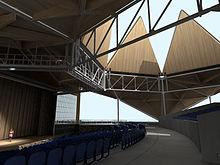
In addition, it hosts several satellite branches of other schools, including Judson University (based in Elgin), Northern Illinois University (based in DeKalb), Rasmussen College, and the University of Illinois College of Medicine (based in Chicago).
Rockford College is best known for graduating Jane Addams, recipient of the Nobel Peace Prize in 1931 for her efforts to promote international peace and justice. Laura Jane Addams (1860 ae1935) entered what was then Rockford Female Seminary in 1877 and became the first graduate to receive a B.A. degree from the newly accredited baccalaureate institution in 1882 (the school was renamed Rockford College in 1892).
Rock Valley College is a community college with several locations in the Rockford area. The main campus is the site of the Bengt Sjostrom Theatre. The former outdoor theatre now features a motorized retractable roof constructed during 2003.
The Rockford Public School District covers about 170 square miles (440 km2) and serves over 27,000 students. It is the third largest school district in the state, with 40 elementary schools, seven middle schools, and four high schools (Jefferson, Guilford, Rockford East High School, and Auburn). The district has seen heavy criticism over the past 30 years, as aging schools have become an issue, and several legal issues have drained the district's resources.
In addition to its public school system, Rockford supports 27 sectarian and nonsectarian private schools ranging from elementary to secondary education.
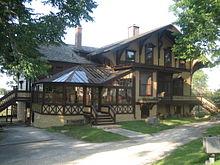
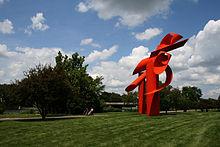
The Rockford area is also known as an outdoor destination, especially in the non-winter months. Numerous forest preserves surround the Kishwaukee River valley, five miles (8 km) southeast of the downtown area. Both the Rockford Park District and Winnebago County Forest Preserve District own and operate numerous golf courses as well. In fact, Golf Magazine called Aldeen Golf Club one of 50 excellent national golf courses one can play for under $50. Aldeen was ranked #38 in the nation in 2004.
During the early-to-late 1940s the Rockford Peaches (of the All-American Girls Professional Baseball League) were one of the first all-female baseball teams in the world. They played their home games at Beyer Stadium which was razed in the 1990s. A placard displays where the stadium once stood, along with additional historical information. Although the 1992 motion picture A League of Their Own features the Rockford Peaches, all of the characters playing on the team were fictional, and the team did not participate in the league championship series in 1943 as depicted in the film. The Peaches won the league championship in 1945, 1948, 1949, and 1950.
Rockford is one of a few markets in the United States with no PBS station of its own. PBS in the Rockford area is available on cable through WTTW in Chicago, and Wisconsin Public Television affiliate WHA-TV in Madison.
Although this is a list of radio stations based in the Rockford area, the signals of radio stations from both the Chicago area and southern Wisconsin also are commonly received in the city.
Word Count: 5273





